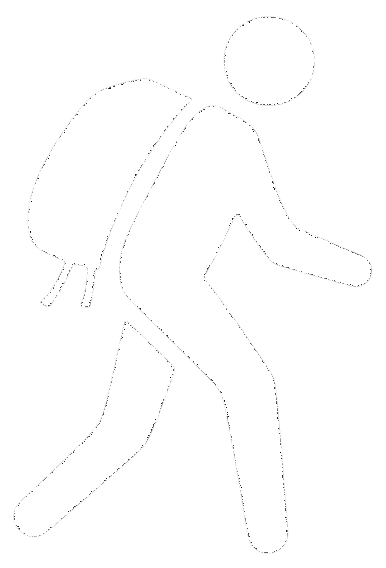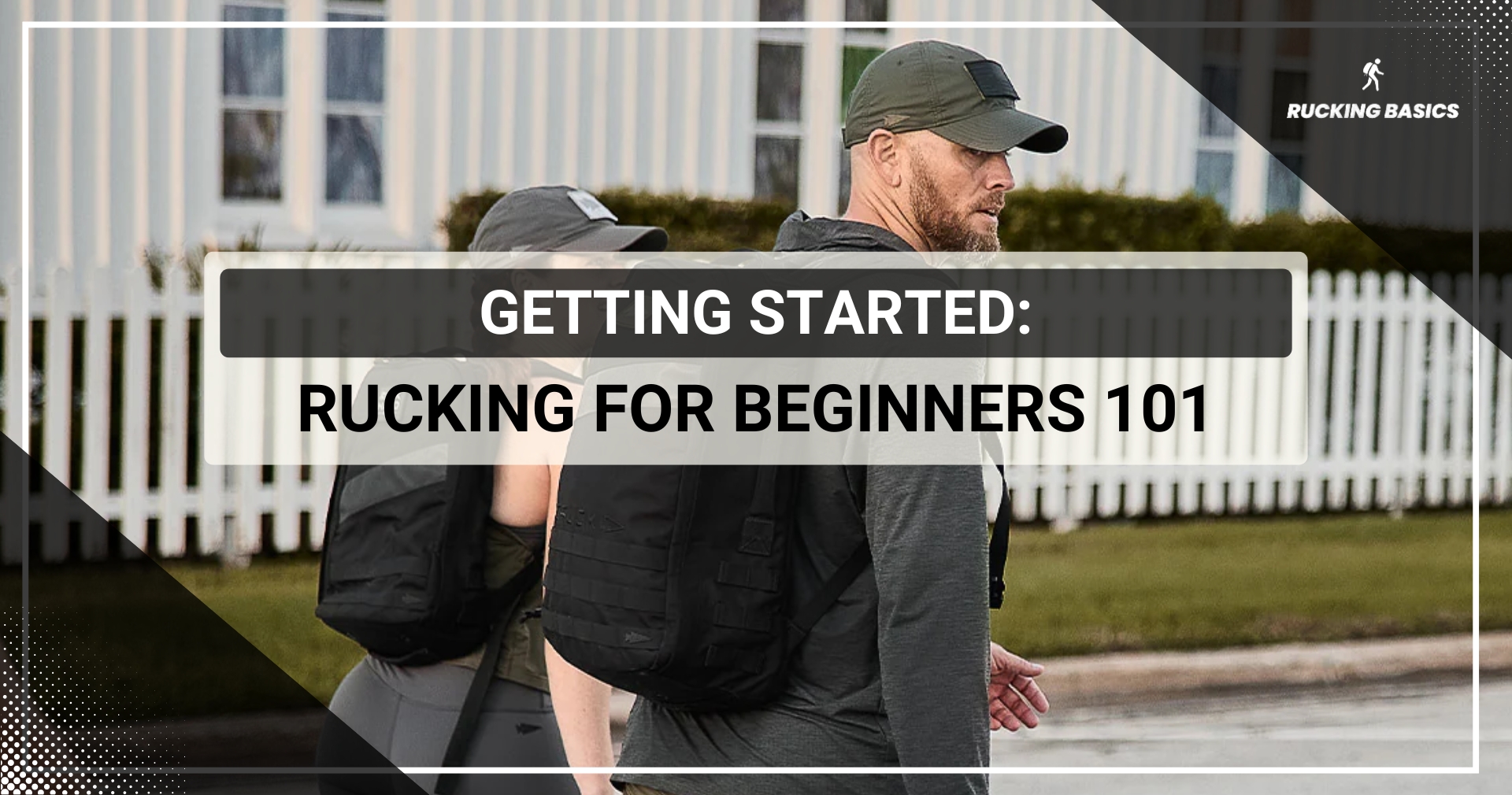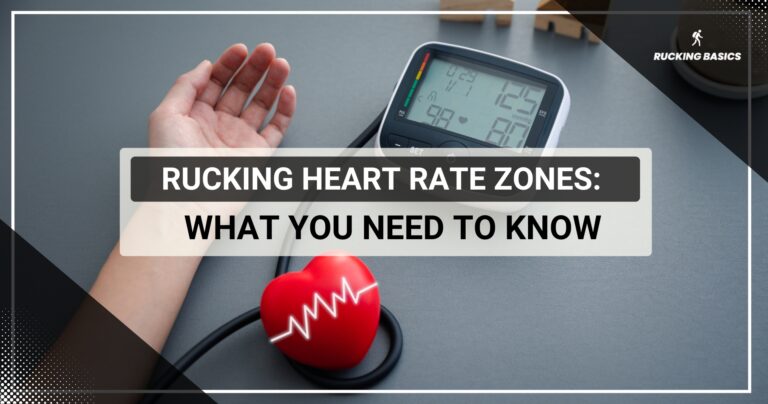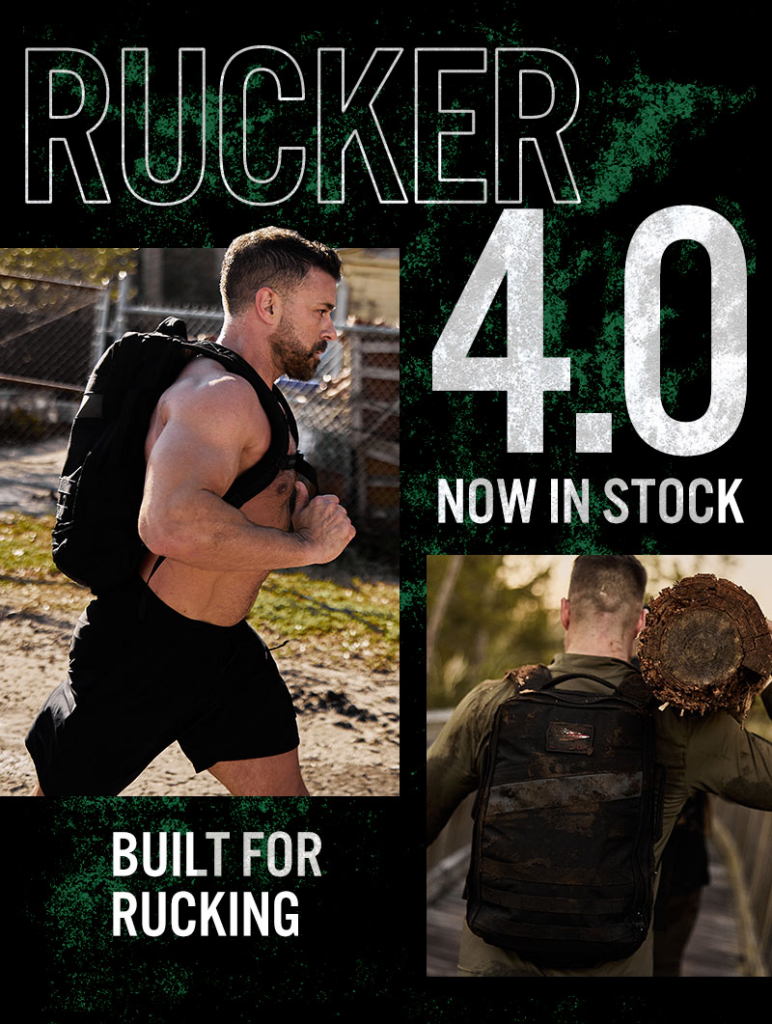Have you recently noticed that you are bored in the gym and lack motivation? Can’t play basketball or tennis anymore because you sustain injuries way too often? Do you want to spend more time in nature? I have a solution for you – rucking workout. Is rucking for beginners? Yes, it is equally suitable for beginners as for seasoned outdoor enthusiasts.
Rucking combines fitness, adventure, and stress relief.
Welcome to the ultimate guide for those ready to venture into the world of rucking! You will find everything you should know before going on a first ruck below.
Understanding Rucking
Rucking is a dynamic activity that involves walking with a weighted backpack. It evolved from military training exercises, where soldiers would carry heavy packs over long distances as part of their physical conditioning and preparations for war conditions. This practice, known as “humping” or “ruck marching,” is essential for building endurance, strength, and mental toughness from ancient times to today.
In the last few decades, especially in the second decade of the 21st century, rucking gained popularity as a civilian fitness activity. It’s pretty obvious why, as it is so accessible and versatile. This rise in popularity is not limited to one demographic; rucking for women has also seen significant growth, with more women embracing the benefits of this dynamic workout.
Unlike hiking, which often requires access to natural landscapes and trails, rucking can be done virtually anywhere — from city streets and urban parks to suburban sidewalks and rural roads.
Rucking Benefits
We fell in love with rucking once we realized many different benefits it offers. So, let’s explore how rucking can positively impact your life.
Physical Benefits
The physical benefits of rucking are undoubtedly the most obvious because they directly improve physical fitness.
- Cardiovascular Health: Rucking elevates your heart rate and strengthens your heart, leading to better cardiovascular health. A few of my clients were afraid to go to the first ruck because they were worried about their cardiovascular system, but I explained to them that regular rucking can lower blood pressure, reduce the risk of heart disease, and improve circulation.
- Strength and Endurance: Carrying a loaded backpack while rucking stresses your muscles, similar to the full-body workout in the gym. Of course, progress is slower than in the gym in terms of strength, but over time, you will build strength and endurance. That will make everyday activities easier and reduce the risk of injury, including back problems.
- Calorie Burn: Rucking is a calorie-burning activity, especially when carrying heavier loads and tackling challenging terrain, like sand beach. It boosts your metabolism, so rucking can be a way to lose weight, together with strength training. To get a clearer picture of its impact on weight loss, check out how many calories does rucking burn during a typical session.
Mental Benefits
Rucking offers more than just physical rewards; it’s also helpful for your mental well-being. Rucking provides a chance to escape the stresses of daily life plus immerse yourself in nature. The combination of physical activity and nature triggers the release of endorphins.
My advice is to unplug from technology and distractions during the ruck and focus solely on the present moment. That will help you to clear your mind.
Social Benefits
Rucking is a social activity, so health benefits are not the only one. Joining a rucking group or a ruck club introduces you to a community of like-minded people who share your passion for fitness and adventure. Whether participating in Goruck challenge or casual outings, you’ll bond with others over shared experiences and goals.
Rucking with friends, family, or fellow ruckers strengthens relationships.
Potential Risks and Disadvantages
As with any physical activity, rucking carries potential risks. In most cases, they are negligible, and the pros far outweigh the cons. But I want you to be aware of the possible risks so that you can avoid them.
Overuse injuries are a common concern for marathon runners, hikers, and ruckers are no exception, particularly when increasing intensity or duration too quickly.
Shin splints and stress fractures are potential risks in rucking. However, with good physical preparation and the right equipment, these injuries can be avoided. After years of rucking, neither I nor my rucking companions have experienced these issues.
Rucking also places stress on the joints, particularly the knees, hips, and ankles. Yet, if you do not have pre-existing joint conditions, such as arthritis or tendonitis, there is no reason to worry.
How to Get Started
Alright, now that you know the benefits, you are keen to start with rucking and daily workouts as soon as possible, but you are wondering how.
Yes, you can already go to your first ruck on the weekend, but I always remind my clients and friends that the initial steps before starting any physical activity are critical.
So, I recommend starting with an assessment of your fitness level. If you have any health issues, talk to your doctor. If not, you can do a regular examination and blood test. After that, you can find a coach to do a detailed fitness test, but you can also skip that part if you think you are already aware of your capabilities.
If outdoor options aren’t readily available, a great alternative is rucking on a treadmill. This allows you to practice rucking in a controlled environment, perfect for beginners looking to ease into the activity while avoiding uneven terrains.
Now, it’s time to set clear and achievable goals. They will provide direction and motivation. When setting goals, aim for measurability, achievability, and time-bound targets. Keep track of your progress over time by recording your rucking workouts, tracking distances, weights, and times.
Once you are ready, proceed to the next stage, which is the selection of suitable terrain and ruck weight. If you have limited fitness experience, start with flat, even surfaces and a lighter load (one ruck plate, for example) than you think you can handle.
If you need company, explore local rucking groups and GoRuck clubs. Later, you will also find charity rucks and endurance challenges, which are opportunities to test your skills, push your limits, and support worthy causes in the process. For now, stick to less demanding endeavors.
Gear & Accessories
When gearing up for rucking, having the right equipment can make all the difference in your comfort and performance. But that doesn’t mean you should break the bank and buy every piece of equipment available on the market. Instead, focus on the essentials: a backpack, footwear, and a few extra accessories.
Rucking Backpack (Rucksack)
Your rucking backpack must carry significant weight, so you must buy a durable one made for outdoor activities rather than everyday activities. Also, the rucksack should be comfortable; otherwise, you will struggle during long rucks.
It’s great if you find a model with a dedicated place for ruck plates. You can also consider a weighted vest if you usually ruck in the city and prefer shorter rucks.
Rucking Footwear
There’s no room for error with shoes and backpacks. Buy shoes or boots designed for hiking, rucking, or trail running, with features like good traction, support, and cushioning.
When choosing the right footwear, it’s essential to compare different brands and models to find the best fit for your needs. If you’re unsure whether to go with GORUCK or another brand, this GORUCK vs NOBULL comparison breaks down their differences. While GORUCK is designed for durability and weighted endurance training, NOBULL shoes focus more on versatility and functional fitness. Understanding these distinctions can help you make an informed choice for your rucking adventures.
You can also consider buying insoles, especially if you have a problem or your rucking boots are less comfortable than when you bought them.
Rucking Clothing
You don’t have to invest in certain clothes for rucking, as with backpack and shoes, but remember that dressing appropriately is essential to stay comfortable.
Socks and pants are the most important.
For the upper body, choose clothing made from moisture-wicking materials that draw sweat away from your skin to keep you dry. Also, dress in layers to adapt to changing weather conditions.
Optional Rucking Accessories
Many accessories will make the ruck easier and more comfortable, so you should buy them over time, but you can start without them.
Consider buying a hydration bladder because staying hydrated is crucial.
Depending on the complexity of your routes and the terrain you’ll be rucking in, you may need a smart watch and/or GPS device to help you stay on course, monitor your heart rate, etc.
Overcoming Common Beginners Issues
When I started rucking, I faced two issues already after the first two ruck sessions, so I want to help you prevent or overcome them.
First are blisters and chafing. It’s hard to walk for a long time; you wear your shoes for hours, and even though you have breathable shoes, blisters still happen. Of course, shoes and socks are the most important, but consider using blister-prevention products as well. Moleskin, blister patches, and blister-specific bandages protect vulnerable areas and provide cushioning. Apply these products before rucking; you will notice reduced friction and, thus, very little or no blisters.
Another common issue is equipment malfunctions. Experienced ruckers may handle these with ease, but for beginners, it can feel like a near-catastrophe. That’s why it’s crucial to always have a backup plan. Prepare for potential problems like broken straps, torn fabric, or malfunctioning zippers. Carry essential repair items such as duct tape, zip ties, safety pins, and a multi-tool. These can help you quickly fix minor issues and keep rucking, even in the face of equipment malfunctions.
For those ready for a new challenge, you might consider trying rucking at night. Night rucking brings an entirely different vibe and can sharpen your focus on managing your gear and adapting to lower visibility. It’s a fun way to switch things up while working on your rucking skills.
Prevention is always the best, so remember to regularly inspect and maintain your rucking gear.
Rucking Workout For Beginners
For beginners, it is important to start with a structured approach that will ease you into the activity while maximizing the benefits. A structured training plan is essential for intermediate and advanced ruckers as well.
Understanding the Basics of a Beginner’s Rucking Workout
Before starting serious rucking, you have to prepare. Those foundational elements that will set you up for long-term success. A beginner’s rucking workout primarily focuses on gradually building endurance, strength, and confidence. Unlike seasoned ruckers who like challenging terrains with heavy loads, your initial workouts should be about getting comfortable with the basics.
- Start with light weights: As a beginner, take a backpack with 10-15 pounds to have a good workout without overwhelming your body.
- Choose flat terrain: For your initial rucking sessions, select a flat, even surface such as a park path or sidewalk. This will help you get used to carrying weight while walking.
- Set realistic goals: Start with short distances, such as 1-2 miles, and aim to run 2-3 times weekly. Over time, you can increase the distance and frequency, but pushing too hard right from the beginning is not a good strategy.
Building Your Rucking Routine
As you establish your routine, remember that consistency is more important than intensity in the beginning stages.
Week 1-4: Building a Base
- Frequency: 2-3 rucks per week
- Distance: 1-2 miles per session
- Weight: 10-15 pounds
- Focus: Maintaining a steady pace and getting used to carrying weight
Week 5-8: Increasing Load and Distance
- Frequency: 3-4 rucks per week
- Distance: 2-3 miles per session
- Weight: Gradually increase by 5 pounds
- Focus: Enhance endurance and introduce more challenging terrains if you feel comfortable.
During this phase, it’s also a good idea to start incorporating complementary strength training exercises (squats and lunges, for example) to build the muscles that support rucking.
Conclusion
Our mission at RuckingBasics is to arm you with the knowledge and tools so that you can safely and quickly start rucking.
Hope you’re full of confidence and enthusiasm now. Remember to start gradually, listen to your body, and enjoy the countless benefits of this rewarding and versatile fitness activity.
Connect with like-minded people, and the opportunities are endless. Happy rucking!
Frequently Asked Questions
Can I Ruck with My Dog?
If your dog is in good physical condition and is used to long walks, rucking can be a rewarding experience for both of you. But before going on a ruck march, start with shorter distances to ensure your dog is up to the challenge. Invest in a quality harness and leash to maintain control, and consider bringing along water and snacks for your pup.
Is It Possible to Use a Treadmill, or Is Outdoor Terrain Necessary?
I prefer outdoor terrain since it offers a more authentic rucking experience, but you can ruck on a treadmill if outdoor options are out of reach for any reason. Set the treadmill to an incline similar to your regular trial. That way, you will simulate outdoor conditions and practice for the next outdoor ruck. You can use weighted vests for this type of training plan.
What Is the Difference Between Rucking and Backpacking?
Rucking is typically done for fitness and training, while backpacking focuses more on outdoor recreation. Another significant difference between rucking and backpacking is that rucking normally prioritizes efficiency and speed, while backpacking emphasizes enjoying the journey and connecting with nature.
Can Rucking Help with Weight Loss?
Although it is not as effective as gym and running, rucking can be an excellent way to support weight loss goals, much better than just walking with your own body weight. Carrying a loaded backpack adds resistance to your walk, increasing calorie burn and muscle engagement. Also, if we compare rucking with running, we will see that rucking is less taxing.
Is It Safe to Ruck with a Baby or Toddler in a Carrier?
In theory, it is safe, but I would not recommend hitting very demanding trails with your kid. If you still decide on this adventure, choose a carrier designed for hiking or outdoor activities.








